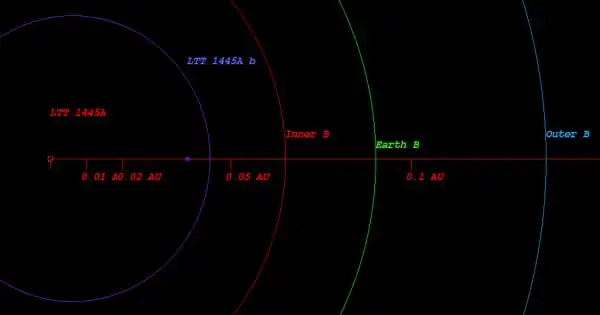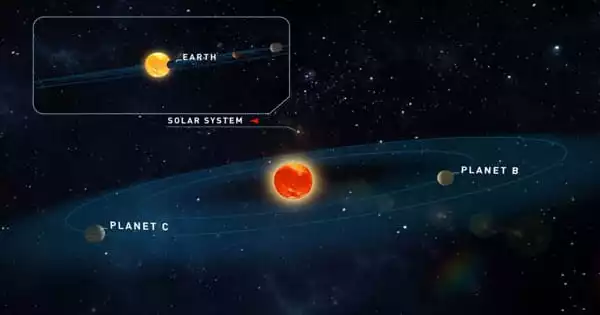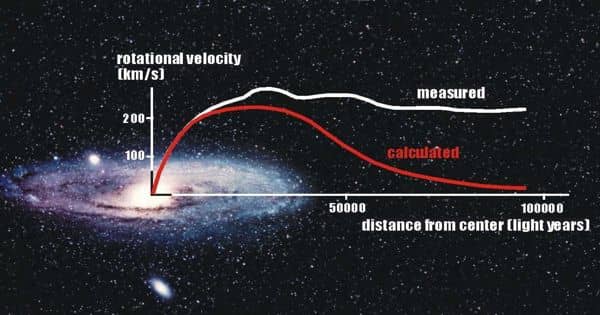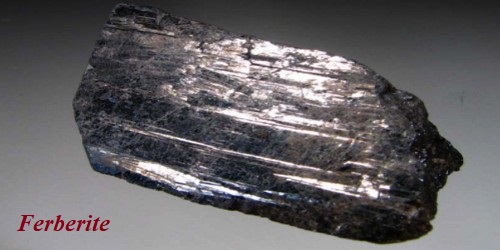LTT 1445 Ab is a super Earth exoplanet that orbits a M-type star. It has a mass of 2.87 Earths, takes 5.4 days to complete one orbit of its star, and is 0.03813 AU away from it. The orbital distance of LTT 1445Ab gets it closer to its host star than the annulus of the star’s habitable zone, where it receives 5.1 times the Sun’s radiation. Its finding was revealed in 2019.
LTT 1445Ab was identified on June 2019 by Harvard Center for Astrophysics astrophysicists using data from the Transiting Exoplanet Survey Satellite. LTT 1445Ab is the second closest transiting exoplanet discovered to far, the closest one known whose primary is a red dwarf, and it may be the most spectroscopically accessible rocky planet discovered to date for atmospheric investigations. The researchers gathered further observations, including HARPS radial velocity measurements, to constrain the planet’s mass. The planet has a steady orbit around only one host star.
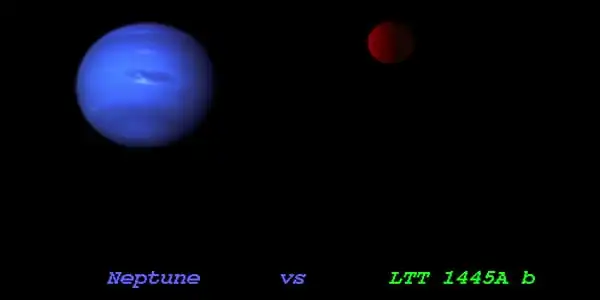
LTT 1445 Ab is an exoplanet that orbits the star LTT 1445A, which is approximately 22.5 light-years (6.9 pc) distant from our Solar System. LTT 1445A has an apparent magnitude of 22.0 and an absolute magnitude of 22.8. It is 0.3 times more massive and 0.3 times larger than our Sun. LTT 1445 A is a star 0.26 times the Sun’s mass and 0.28 times its radius. It’s 22.40 light years away from our solar system.
The surface temperature is 3340 degrees Celsius, with M spectral types. The extrasolar planet LTT 1445A b orbits the star LTT 1445A every 5.4 days at an orbital distance of 0.04 AU in this planetary system. LTT 1445 A b was discovered via the transit method by the Transiting Exoplanet Survey Satellite (TESS) observatory in 2019-10. Its semi-major axis is 0.04 astronomical units, as opposed to 1 astronomical unit for Earth. LTT 1445 A b has a mass that is 2.201 times that of Earth.
LTT 1445 A b has a radius that is 1.380 times that of Earth. LTT 1445 A b is a Super Earth with a mass of 2.201 Earth masses. Super Earths could be terrestrial worlds like Earth, but they could also be ocean worlds or terrestrial worlds encased in a thick atmosphere, in which case they are known as Mini Neptunes. There are no known Super Earths in our solar system, but if one exists, the so-called Planet Nine, which is thought to have a mass between five and ten Earth masses, might very well be a super Earth.
